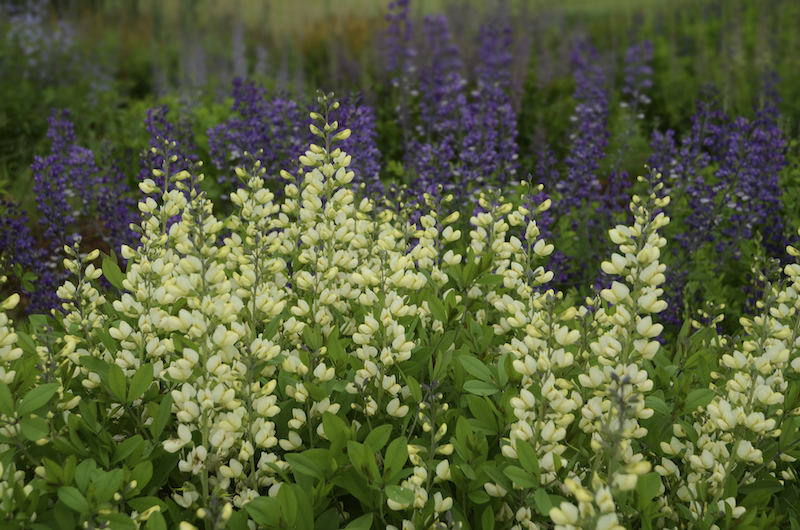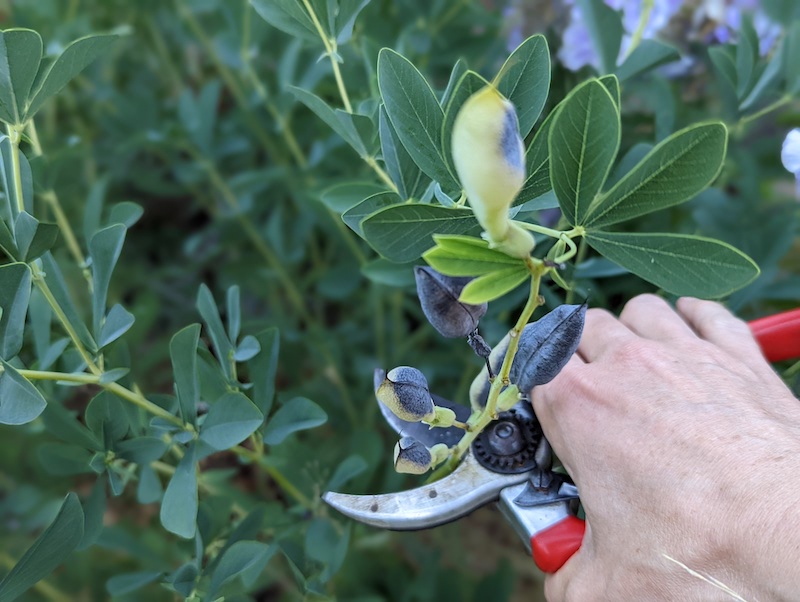False Indigo is hardy in zones 3 to 9 and requires little preparation for winter if certain cultural conditions are met. Soggy or wet areas are not ideal for False Indigo, especially in areas where the ground freezes. They would prefer to be in an area with dry, quick-draining soil, where their roots will not be wet. A light mulch of compost may be applied around the roots of the plant, being careful to stay away from the plant's crown.

Protecting False Indigo in Winter
False Indigo is a tough perennial with a tender crown that may be damaged when subjected to excessive, below-freezing temperatures. Once the foliage has died back, the plant can be trimmed to within a few inches above the ground or flush with the surrounding soil. In addition, a light coating of compost or salt marsh hay may be applied to protect the cold-sensitive crown.
This is not a necessary step but in areas with particularly harsh winters, this extra protection may prolong the survival of the plant. It should be noted that the plant crown should be kept free of debris that may cause ice formation or allow water to pool near the crown. The plant's crown is sensitive to excessive moisture.
Cutting Back False Indigo For Winter
False Indigo may be semi-evergreen in warmer climates but it is common practice to cut the plant back to within a few inches above the soil line when the growing season has ended. Doing this ensures that the plant will go into dormancy and not continue to waste energy trying to produce new growth that may not survive the coming cold temperatures.
In areas where the plant is not semi-evergreen, it is best to cut the plant back to remove unsightly foliage that may trap moisture and ice around or near the plant’s crown, which may damage or kill the plant. Keeping the crown healthy is key to the survival of this perennial.

False Indigo Winter Care in Pots
False Indigo grown in pots should be brought inside in areas where the temperature drops below freezing for extended periods and should be stored for the winter in a cold but not freezing area. While the plant is dormant, all water should be withheld until it shows signs of active growth in the spring.
Alternatively, the plant can be removed from the pot, planted in the garden, and repotted in early spring when the temperatures have warmed. The potting soil used should be friable and the pot should have ample drainage.
Watering False Indigo in Winter
False Indigo would prefer to go into dormancy in the late fall in soil that is slightly on the drier side. The roots are long and fleshy and hold moisture well, making them drought tolerant. However, too much moisture, especially during cold weather, can cause them to rot. They prefer a fine balance when it comes to watering. Watering False Indigo in the ground should not be done in the winter unless the weather has been unseasonably dry. All watering should cease as freezing temperatures approach.
False Indigo in pots should only be watered just enough to keep the soil barely moist and never wet or soggy. Generally, pots may be checked on periodically for moisture levels, but would most likely survive indoors without additional water. Whether False Indigo is grown outdoors or stored indoors for the winter, a light watering every month would suffice until the plant begins actively growing again in the spring.
Growing False Indigo Indoors
False Indigo cannot be grown indoors as it requires a freezing and dormancy period in order to produce next year's growth and blooms. The plant should only be brought indoors if it is being grown in a pot and requires protection from freezing temperatures. It should be placed in a cool but not freezing area for the winter, where it will remain dormant until the spring. The pot may be moved outside in early spring, when the plant shows signs of active growth.
Steps To Care For False Indigo in Winter
Step 1 - Cut back plant to within six inches of soil level
Step 2 - Make sure that the soil is slightly moist but not soggy
Step 3 - Apply a light coating of compost, staying clear of the plant crown
Step 4 - Move pots to a protected area
Step 5 - Keep the crown free of debris, which may trap moisture and cause ice to form
 |
Author Chris Link - Published 08-23-2022 |
